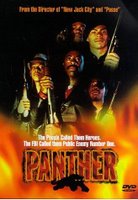Movie Review: SUPERMAN RETURNS
 I wish I could take a pair of scissors to Bryan Singer’s Superman Returns. I really do. Overall, it’s a boffo entertainment, with a terrific cast, great dialogue, a sense of humor, and action set pieces that filled me with the sense of wonder I wish the Christopher Reeve films had offered me three decades ago. But its pacing...I don’t know how else to put this... sucks big time.
I wish I could take a pair of scissors to Bryan Singer’s Superman Returns. I really do. Overall, it’s a boffo entertainment, with a terrific cast, great dialogue, a sense of humor, and action set pieces that filled me with the sense of wonder I wish the Christopher Reeve films had offered me three decades ago. But its pacing...I don’t know how else to put this... sucks big time. After a stunning recreation of the old 1978 opening credits from Richard Donner’s Superman, complete with John Williams score, the movie opens with...Lex Luthor (Kevin Spacey) forcing a dying old woman (Noel Neill, the 1950s Lois Lane) to sign her wealth over to him. Then we quickly shift to...Ma Kent (Eva Marie Saint) washing a dish in the kitchen of her farmhouse. Soon after, we spend an insufferable amount of time watching her son Clark (Brandon Routh), returned to Earth after five years, staring out over the
By this time, 15 minutes into the picture, I was mentally screaming, “Put on the friggin’ costume!”
But first, Lex and his cohorts are shown in the
Then — finally! — more than a half-hour into the movie,
Superman Returns suffers from a very slow opening. Superman, we learn, has been missing from Earth for many years because he’s visited the remains of the planet Krypton. Maybe we should have been shown that, not told about it. Or Singer might have moved the film’s first big action sequence — Supes’ spectacular airplane rescue — into the first six or seven minutes of the movie. Returns needs a kick-start, not a dishwashing scene.
After the first 30 minutes, Superman Returns really soars...for about 105 minutes. Then, after the Big Final Action Sequence, it dribbles off for 15 angst-filled minutes to its end.
This movie is slightly more than two and a half hours long. Given the chance to re-edit it, I’d cut the first 30 minutes to maybe 12, trim 10 minutes off its end, and shuffle an action scene or two. Then you’d have a nice, fast-paced Superman Returns, just two thrilling hours in length.
But I doubt we’ll see a Conger’s Cut of Superman Returns on DVD anytime soon. A pity, even if I do say so myself.























